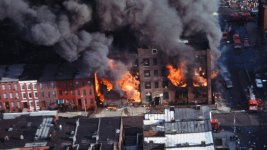Pressure and Volume are two different things when it comes to fire pumps. I've experienced plenty of hydrants that have a ton of flow but zero pressure, necessitating a pumper to be put on the hydrant to then push the volume in an increased pressured to the fireground. Where I work now, I can supply a TL off a hydrant without bumping the pressure up at all, some places we actually need to gate it down.
As for the FDNY move from 1000 to 2000gpm? I'm not on the job there, so I can't explain why, but I do know that the actual pump housing between most pumps is exactly the same, it's just the addition of extra plumbing and outlets that gets you you're increased GPM rating. My FD has a quint with a 2000GPM pump, that we had tested and certified to only 1500GPM so that when it's older and worn it will still be able to obtain that 1500gpm during annual testing. I have 15 years left until I'm eligible to retire and I doubt I'll see a replacement for that truck before I walk out the door.



